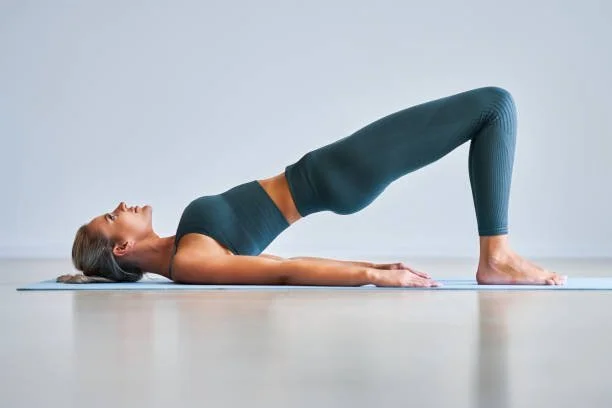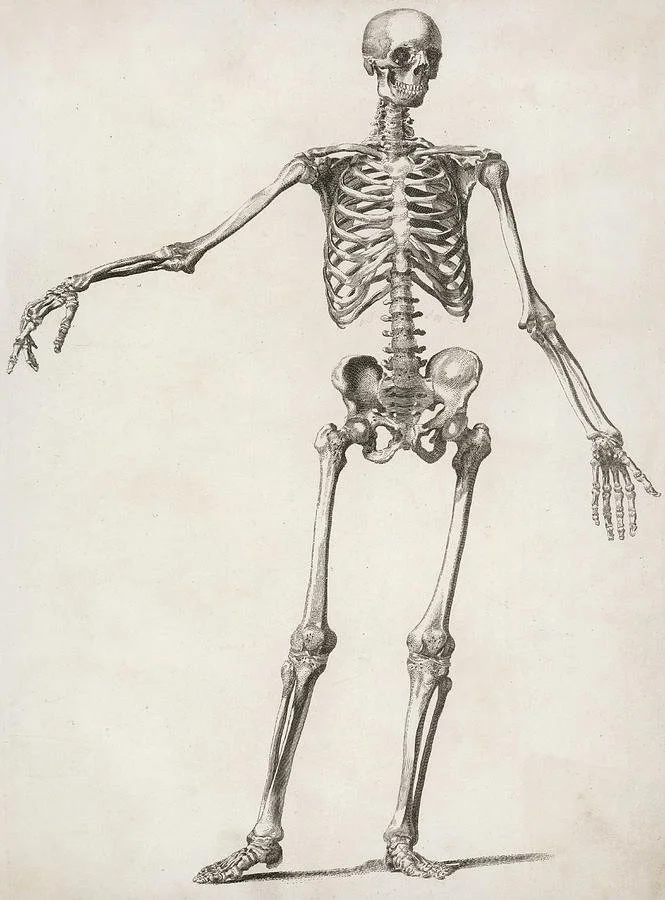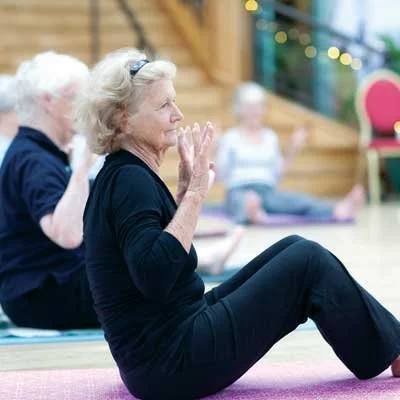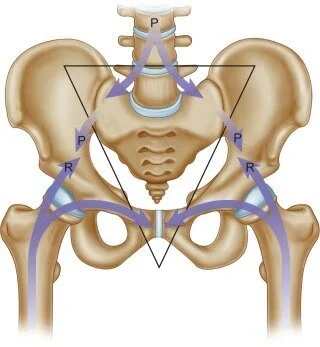Your Pelvis and Pilates
You do not need to be an anatomical expert to benefit from a Pilates class; however, having some understanding of your own body can help to enhance your practice, and in turn, contribute towards more positive movement experiences.
The Pilates Bridge (stock image)
One key part of the body from a movement perspective is the pelvis. If you’ve ever taken a Pilates class, it’s highly likely you’ve heard mention of it.
You may have done ‘Pelvic clocks’, been told to lift one side of the Pelvis doing some side-to-side movement, or you may have been cued to do a ‘Pelvic ‘curl’…..perhaps to start a bridge?
The Pelvis is clearly important in Pilates, but why?
Overall function of the Pelvis
The pelvis is designed to both support weight and distribute force. Think of it as a ‘halfway house’ between the top and bottom of the body.
Anatomical illustration (stock images)
In particular, because it connects to our spine, the pelvis plays a key role in spine mobility and articulation, and because it connects to our legs, it plays a key part in hip health, alignment and overall efficiency of movement.
The pelvis itself also forms the walls of the pelvic cavity, which contains reproductive, digestive and urinary organs. The pelvic shape is different in men compared to women, to accommodate for pregnancy and childbirth, as seen in this image from Visible Body.
Male and Female pelvis comparison - Visible Body
The Pelvis and movement
Articulation of the Spine
The articulation of the Spine is one of the key principles of Pilates (Polestar Principle 3). Spine articulation allows for effective distribution of force through the body, whilst maintaining joint health.
If your spine is inflexibly stiff at 30, you are old; if it is completely flexible at 60, you are young.
Joseph Pilates
As the pelvis is connected to the spine you cannot move one without the other. That’s’ why we often start the lying down part of a class with ‘Pelvic clocks’ or exploring some movement of the pelvis; it helps to introduce movement into the length of the spine (hence when you do Pelvic clocks you can sense movement in the whole length of the spine, to include the head and neck).
You can see the connection of Spine to Pelvis in this illustration from Human Anatomy atlas.
Labelled diagram of the pelvic girdle.
In Seated Pilates you‘ll be cued to sit on or move from your sit bones
**The ASIS is the Anterior, Superior Iliac Spine – i.e. the bony parts you can feel at the front of your pelvis. Many people think these are your hips, but the hip joint is actually much lower and narrower.
* The sitz, or ‘sitting bones’ bones form the base of the Ischial Tuberosity, the lower part of the pelvis. These bones are what you can feel in the mat when you are sitting down. Together with your tailbone, they help stabilise you and absorb force
Force absorption
Apart from its key role in spine articulation, the other role of the pelvis in movement is with regard to load transfer and force absorption. In essence, your pelvis accommodates the load transfer between the spine and the legs.
“Distribution of movement = distribution of forces”
— Polestar Principles of Movement
That ‘load’ can come from absorbing ground force when we walk or run, or from your own bodyweight and the effects of gravity. Force transfer takes place in two particular parts of the pelvis – our hip joint, and the Sacroiliac joint.
Pelvic force absorption - Science Direct
Our hips, for example, are meant to take a tremendous amount of force, when aligned correctly.
This ball and socket joint, and in particular, its congruency (meaning the effective meeting of the head of the femur with the acetabulum) is essential to effective movement and force transfer.
“In a single step, the ground force coming into the body means you may take up to 8 x your body weight through the hip joint. ”
— (Anderson, B, 2013)
More on the hip joint in an upcoming post…..In the meantime, I hope you can see that whilst the ‘Pelvic clocks’ and ‘Pelvic curl’ may seem a small part of your practice, their implications for effective movement are significant. As part of the ‘whole body approach’ of Joseph Pilates, your Pelvis has a large part to play.
Sarah
Bibliography
Anderson, B (2013). Hip Pathologies and Pilates. Pilates Anytime US.
Polestar Principles of Movement (2008) Polestar Pilates Education. Coral Gables, FL
Visible Body (2022) 3D Skeletal System: The Pelvic Girdle. Available at Visiblebody.com. Accessed 11th February 2022.







